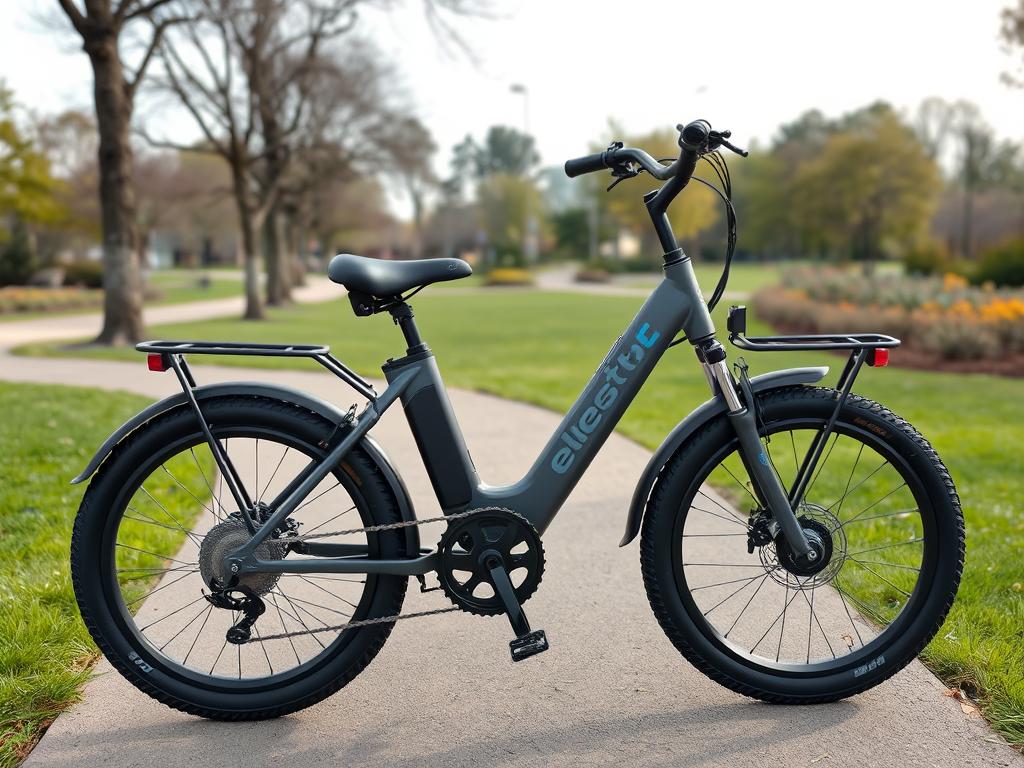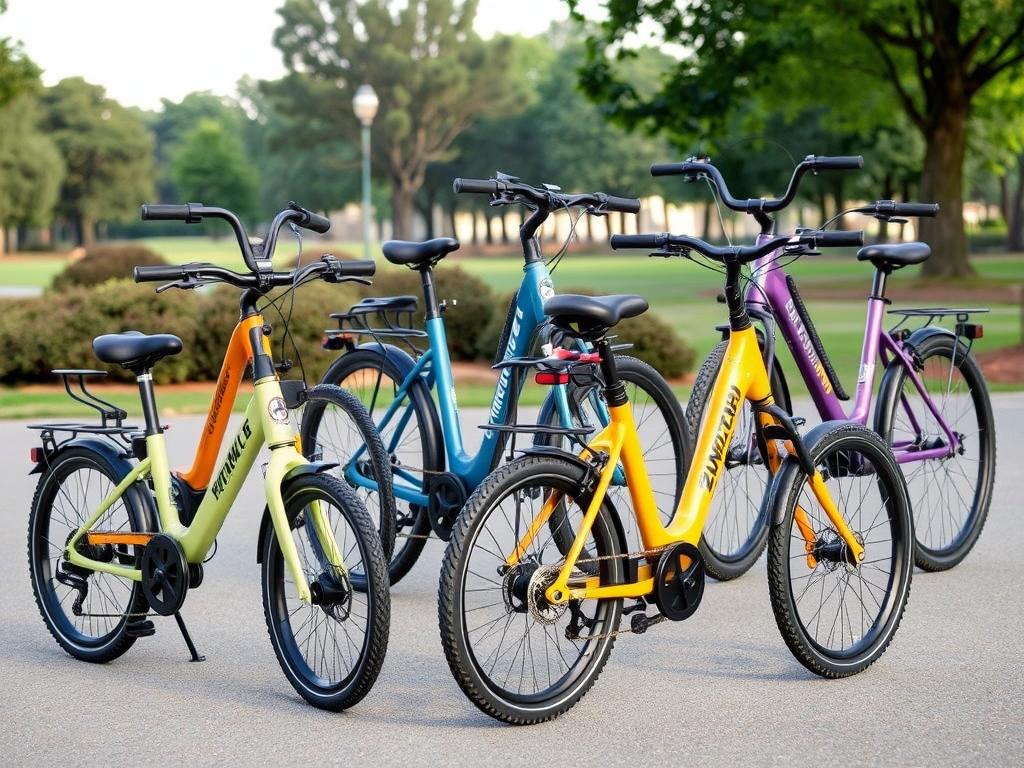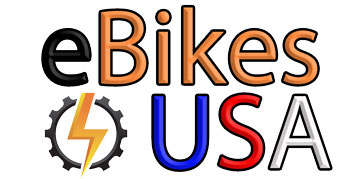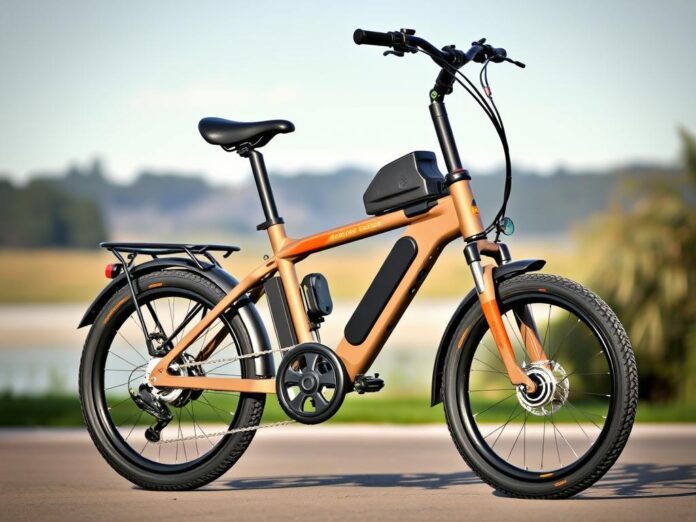Adaptive eBikes are changing how people with disabilities move around. They offer stability, custom features, and electric help. This lets you move freely and feel more confident.
These bikes are made for different needs, like tricycles and hand-cycles. This guide will show you the best options for your needs. It covers the important features and benefits of adaptive eBikes.
Adaptive eBikes are great for staying fit, feeling better, or just enjoying cycling. They make life easier and more fun. Start exploring with the Adaptive eBike Shop Guide.
Key Takeaways
- Adaptive eBikes are specialized electric bicycles designed to accommodate the needs of individuals with disabilities.
- These bikes offer enhanced stability, customizable features, and electric assistance to empower disabled riders.
- Adaptive eBikes come in various forms, including tricycles, tandems, and hand-cycles, catering to different mobility requirements.
- Adaptive eBikes can improve fitness, well-being, and independence, providing an accessible transportation solution.
- The guide explores key factors to consider when choosing an adaptive eBike, such as weight capacity, battery range, and comfort features.
Understanding Adaptive eBikes and Their Benefits
Adaptive eBikes are special electric bikes for people with disabilities or limited mobility. They offer a new way to enjoy cycling, helping individuals face challenges and find freedom.
What Is an Adaptive eBike?
Adaptive eBikes have features for easy cycling access. They have step-through frames, adjustable seats, and electric motors. These help riders pedal and move around.
Key Features of Adaptive eBikes
- Step-through frames for easy access
- Customizable seating options to accommodate different body types and needs
- Electric motors to provide power-assisted pedaling
- Specialized controls and accessories to meet individual requirements
Advantages for People with Disabilities
Adaptive eBikes bring many benefits for those with disabilities. They improve independence, boost physical activity, and open up outdoor fun. These bikes help riders with autism, cerebral palsy, epilepsy, and more enjoy cycling.
| Benefit | Description |
|---|---|
| Improved Independence | Adaptive eBikes let people with disabilities move around easily. This builds self-reliance and freedom. |
| Increased Physical Activity | Riding these bikes is a low-impact exercise. It helps with fitness, muscle growth, and health. |
| Enhanced Outdoor Recreation | Adaptive eBikes let people with disabilities explore outdoors. They can join social activities and events, improving life quality. |
“Adaptive cycling is about creating opportunities for everyone to experience the joy and freedom of cycling, regardless of their abilities.” – [Founder, Adaptive Cycling Foundation]
Adaptive eBikes change how people with disabilities cycle and enjoy the outdoors. They offer independence, physical health, and fun. These bikes are making a big difference in people’s lives.
Types of Adaptive eBikes Available
The market has a wide range of adaptive electric bikes for people with physical disabilities. These bikes are designed to make cycling easier and more accessible. They help people with different abilities enjoy the outdoors with more freedom.
Tricycle eBikes for Enhanced Stability
Tricycle eBikes are great for those who need more stability. Their three-wheel design makes them sturdy and easy to balance. This is perfect for people with balance problems or limited mobility in their legs.
Tandem eBikes for Riding with a Companion
Tandem eBikes are perfect for riding with someone. They have two seats, so a rider with a disability can cycle with a friend or family member. These bikes are also good for people who are blind or need help while riding.
Hand-Cycle eBikes for Arm Mobility
Hand-cycle eBikes are for people who can’t use their legs. They use arm cranks to move, which is great for those with spinal cord injuries or amputations. These bikes let people with limited mobility enjoy cycling outdoors.
Each type of adaptive eBike is made to meet specific needs. They ensure that people with physical disabilities can enjoy cycling and the outdoors with confidence and freedom.
| Adaptive eBike Type | Key Features | Suitable for | Example Models | Price Range |
|---|---|---|---|---|
| Tricycle eBikes |
|
Individuals with balance concerns or limited lower-body mobility | Ferla Cargo Bike – Inspire | $3,999 USD |
| Tandem eBikes |
|
Riders with visual impairments or those needing additional support | Ferla Cargo Bike – Royce Edition | $4,999.99 USD |
| Hand-Cycle eBikes |
|
Individuals with spinal cord injuries, amputations, or other conditions affecting the lower limbs | Ferla Cargo Bike – Royce Mid-Drive | $6,499.00 USD |
These adaptive eBike solutions offer a wide range of features and benefits. They cater to the diverse needs of individuals with physical disabilities. This empowers them to enjoy the freedom and independence of electric-assisted cycling.
Factors to Consider When Choosing an Adaptive eBike
When picking an adaptive eBike, think about several important things. These ensure the bike fits your needs and is comfortable, safe, and fun to ride. Consider weight capacity, size, battery life, and range. Each one is key to finding the right eBike for people with disabilities.
Weight Capacity and Size
First, check the bike’s weight capacity. Make sure it can handle your weight and any extra gear you might carry. Also, look at the bike’s size and how it can be adjusted. This includes seat height and handlebar position to fit you perfectly.
Battery Life and Range
The battery life and range are vital, especially for daily commutes or longer trips. Choose a bike with a long battery life and a range that fits your usual rides. This way, you can ride without worrying about running out of power.
Comfort and Adjustment Features
Comfort is essential when picking an adaptive eBike. Look for adjustable seats, handlebars, and pedals for a custom fit. Features like low step-through frames and suspension systems make for a smoother ride.
By considering these factors, you can find an adaptive eBike that meets your mobility needs and improves your cycling experience. Remember, the eBike policies for disabled individuals and the applicability of eBikes under ADA are important when choosing.
Accessibility Features of Adaptive eBikes
Accessibility is key in eBikes for people with disabilities. Adaptive eBikes offer many features to make riding easier and more enjoyable. They have step-through frames and special controls for everyone.
Step-Through Frames for Easy Access
Adaptive eBikes have step-through frames for easy getting on and off. This design helps those with mobility or balance issues. It’s easier to mount and dismount without stepping over a high crossbar.
Low-Impact Gear Systems
These eBikes also have low-impact gear systems. They reduce strain on joints and muscles. This makes pedaling smooth and easy, perfect for those with less strength or endurance.
Control Options for Varied Abilities
Adaptive eBikes come with various control options. You can find modified handlebars, different braking systems, or even voice controls. This customization helps riders find the right setup for their needs, making them feel confident and independent.
Adaptive eBikes aim to make cycling accessible for everyone. They focus on ease of use, less physical effort, and tailored controls. This makes riding a bike a possibility for those with disabilities, whether in the city or on trails.

“Adaptive eBikes have been a game-changer for me. The step-through frame and low-impact gears make it possible for me to enjoy the outdoors and stay active in a way I never thought possible.” – Sarah, eBike user with a physical disability
The eBike industry is meeting the need for accessible transport. By following ADA guidelines for electric bicycles and focusing on eBike accessibility regulations, they make cycling accessible to all.
Customization Options for Your Adaptive eBike
Creating your ideal [https://ebikesus.com/e-bikes-for-senior-mobility/] adaptive eBike is all about making it yours. You can choose from many accessories and colors to fit your needs and style perfectly.
Selecting the Right Accessories
Adaptive eBikes can be customized with various accessories. These include seats, safety harnesses, and cargo carriers for riders with disabilities. These additions make your eBike a great way for inclusive transportation with eBikes.
Color and Design Choices
Adding your personal touch to your eBike is more than just fun. It also makes your bike stand out and safer on the road. You can pick from many colors and designs to make your eBike truly eBike accommodations for physical disabilities.
Modifying Controls for Individual Needs
Customizing your eBike’s controls is key for a great ride. You might need adapted brake levers, special pedals, or gear shifters. These changes let you control your eBike easily and enjoy riding.
Choosing the right accessories, colors, and controls is exciting. It lets you build an eBike that meets your needs and makes you feel confident and free.
| Adaptive eBike Model | Price | Key Features |
|---|---|---|
| Ferla Cargo Bike – Inspire | $3,999 USD | Front load cargo bike, up to 350 lbs capacity, 3-point safety harness |
| Ferla Cargo Bike – Royce Edition | $4,999.99 USD | Luxury features including doors, designed for disabled individuals |
| Ferla Cargo Bike – Royce Mid-Drive | $6,499.00 USD | Mid-drive motor for improved power and range, custom accessibility options |
“According to a survey by the National Center for Biotechnology Information (NCBI), 72% of disabled riders find customizable controls extremely beneficial.”
Top Brands Offering Adaptive eBikes
For people with disabilities, electric bikes (eBikes) with adaptive features can change their lives. Many top brands now offer eBikes made for accessibility, safety, and comfort. These bikes are designed to meet the needs of those who need them most.
Overview of Leading Manufacturers
Brands like Van Raam, ICE Trikes, and Bowhead Corp are leading in adaptive eBikes. They focus on creating bikes that fit the needs of riders with different abilities. Their work is all about making transportation easier and safer for everyone.
Comparison of Models and Features
- The Ferla Cargo Bike – Inspire model costs $3,999 USD. The Royce Edition starts at $4,999.99 USD, and the Royce Mid-Drive at $6,499.00 USD.
- The Royce Edition has an optional push-snap door upgrade. This makes it easier for some people with disabilities to use.
- The Ferla Family Cargo Bike – Royce Edition can hold up to four people or 350 lbs of cargo. It has a spacious front load bucket and safety harness belts.
- Ferla gives the Royce Doors for FREE to those with disabilities and special needs. They know how important it is to be accessible.
User Reviews and Recommendations
People who use adaptive eBikes love them. They say these bikes have made a big difference in their lives. Riders talk about feeling more independent and free.
“The Ferla Royce Edition has been a game-changer for my family. My son with autism loves the stability and safety features, and the doors make it so much easier for him to get in and out. It’s been a true quality of life improvement.”
If you or someone you love needs an adaptive eBike, there are many options. Look at what top brands offer and read what others have to say. You’ll find the right eBike to improve your life.

Adaptive eBike Financing and Assistance Programs
Getting an adaptive eBike is a big deal, but there are ways to make it easier. There are loans, grants, and insurance help. These options help people with disabilities get the mobility they need.
Grants and Subsidy Options
Many groups and government agencies offer grants and subsidies. These can help a lot, especially for those who don’t have much money. Looking into local and national programs can find you help.
Insurance Reimbursement Opportunities
Some health insurance plans cover adaptive eBikes as medical equipment. Check with your insurance to see if you can get money back. You might need to show proof and get approval first, but it could save you a lot.
Loan Programs for Adaptive Equipment
There are loans just for adaptive gear, like eBikes. These loans have good terms and rates. They’re made for people with disabilities, so they might be easier to get than regular loans.
| Funding Source | Eligibility Criteria | Potential Benefits |
|---|---|---|
| Medicaid Waiver Programs | Individuals with disabilities who meet Medicaid guidelines | Coverage for mobility equipment not included in standard Medicaid benefits |
| Civic Organizations | Individuals with demonstrated financial need and disability | Fundraising and direct assistance for adaptive equipment purchases |
| Online Crowdfunding Platforms | Individuals with the ability to create and promote a fundraising campaign | Access to a wider pool of potential donors and supporters |
Looking into all these options can help you get an adaptive eBike. It’s a big step towards more freedom and a better life.
Safety Considerations for Adaptive eBikes
Using adaptive eBikes means safety first. Always wear helmets and reflective clothes for a safe ride. Also, know the local laws about eBikes, as rules can vary.
Helmet and Safety Gear Recommendations
Wearing a helmet is key to protect your head. Choose helmets that follow ADA guidelines for electric bicycles. Add reflective vests, gloves, and knee/elbow pads for more safety.
Understanding Local Riding Laws
Learn about the eBike accessibility regulations in your area. Some places have special rules for adaptive eBikes. Knowing these laws helps you ride safely and avoid trouble.
Maintenance Tips for Safety
Keep your eBike in top shape for safety. Check the battery, brakes, and all parts regularly. Follow the maker’s maintenance guide to avoid breakdowns.
By focusing on safety, wearing the right gear, knowing local laws, and keeping your eBike in good condition, you can enjoy the freedom of eBikes safely.

| Safety Consideration | Importance | Key Recommendations |
|---|---|---|
| Helmet and Safety Gear | Crucial for protecting against injuries |
|
| Local Riding Laws | Ensures compliance and avoids legal issues |
|
| Maintenance | Ensures safe and reliable operation |
|
“E-bikes can be more accessible to people with physical limitations that prevent them from riding a traditional bicycle.”
By prioritizing safety, wearing the right gear, knowing local laws, and keeping your eBike in good shape, you can enjoy the freedom and independence of eBikes safely.
Community and Support for Adaptive eBike Users
The use of [inclusive transportation with eBikes] is growing fast. A strong community has formed to support [disability rights and eBike usage]. Online forums and social networks are where users share their stories, ask for advice, and meet others. These places help people feel connected and share useful tips and resources.
Local support groups are also key for adaptive eBike users. They host rides, workshops, and social events. These events help users learn, stay active, and meet others with similar interests. They create a supportive network for everyone.
Events and Rides for Adaptive Cyclists
The adaptive cycling community loves to organize events and rides. They have races and group rides that celebrate [disability rights and eBike usage]. These events let riders meet others, try new things, and enjoy the outdoors together.
| Event | Location | Description |
|---|---|---|
| Adaptive Cycling Festival | Denver, CO | A multi-day celebration featuring adaptive cycling races, clinics, and social events. |
| Disabled Sports USA’s Ski and Snowboard Races | Nationwide | Winter sports competitions for athletes with physical disabilities, including adaptive eBike categories. |
| Adaptive Bike Ride | Seattle, WA | A community-organized group ride that welcomes riders of all abilities, including adaptive eBike users. |
By joining online communities, local groups, and inclusive events, [disability rights and eBike usage] fans can find support and inspiration. They can fully enjoy the freedom and independence that [inclusive transportation with eBikes] offers.
“The adaptive eBike community has been a game-changer for me. It’s not just about the bike – it’s about the people, the shared experiences, and the sense of belonging. I’ve made lifelong friends and discovered new adventures I never thought possible.”
– Quinn Brett, National Park Service Program Analyst
How to Care for Your Adaptive eBike
Having an adaptive eBike is empowering. It gives people with physical disabilities more freedom and mobility. To keep your eBike working well, you need to take care of it. Follow these easy steps to make sure your eBike stays in great shape for many rides.
Regular Maintenance Checklist
- Check the battery often to make sure it’s charged and working right.
- Look at the tire pressure and tread. Replace tires when they’re worn out to keep your ride stable.
- Oil the moving parts like the chain and gears. This keeps them running smoothly and prevents damage.
- Clean your eBike often to get rid of dirt and salt. This helps it perform better and last longer.
Troubleshooting Common Issues
Even with good care, your eBike might have small problems. Learn about common issues and how to fix them. For example:
- If your battery isn’t lasting as long, check if it’s old or if the charger is working right.
- If your eBike loses power, look for loose or broken wires.
- If pedaling or steering is hard, adjust the brakes, gears, and suspension to make it easier.
When to Seek Professional Help
For big problems or special parts, get help from a pro. They can fix your eBike and make sure it’s safe and working right. It’s especially important to get help for things like brakes, motor, or suspension.
By taking care of your eBike, you can enjoy its freedom and independence. Regular maintenance, knowing how to fix small problems, and getting help when needed are key. This way, your eBike will keep you moving for years.
Conclusion: Finding Your Perfect Adaptive eBike
Choosing the right adaptive eBike means looking at what you need and what’s out there. It’s a journey to more freedom, better health, and new outdoor fun. With the right bike and support, people with disabilities can cycle freely and enjoy its benefits.
Recap of Key Points
This guide has shown how adaptive eBikes change lives for the better. We’ve looked at their special features and types. You now know what’s out there and how to pick the best one for you.
We’ve also talked about important things to think about when choosing a bike. Plus, we’ve covered how to make sure it fits you perfectly.
Next Steps in Your Shopping Journey
Start by thinking about what you really need and want. Talk to local groups, try out bikes, and ask for advice. With eBikes now covered by the ADA and more options for disabled people, it’s a great time to explore.
Encouragement for Exploration and Adventure
Adaptive eBikes offer more than just a way to get around. They open up new worlds for adventure, friendship, and better health. Start your journey and let your eBike lead you to a more active, happy life. The world is waiting for you!






